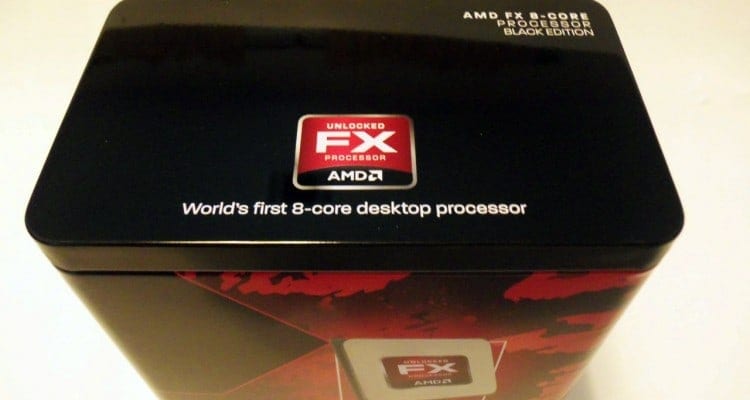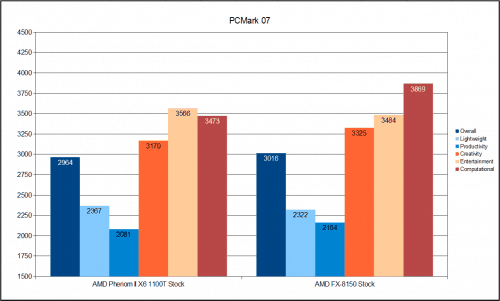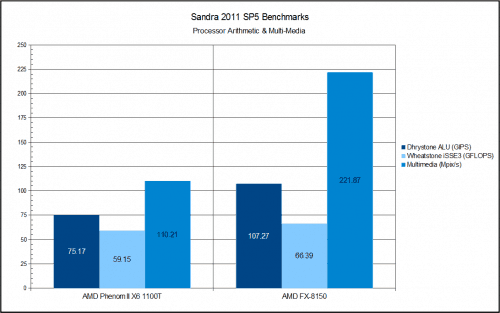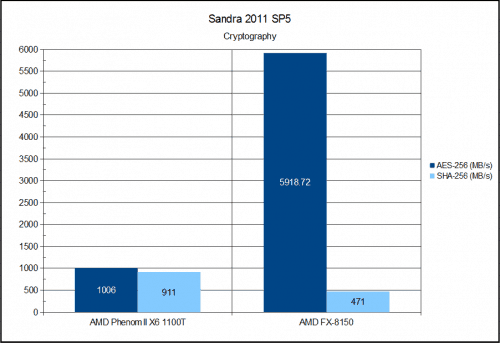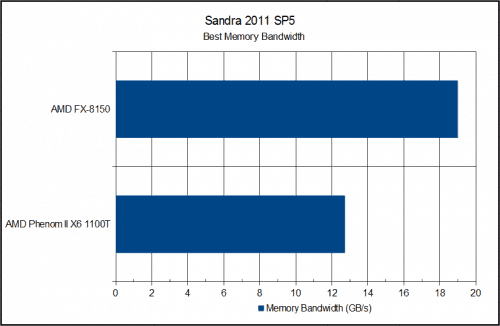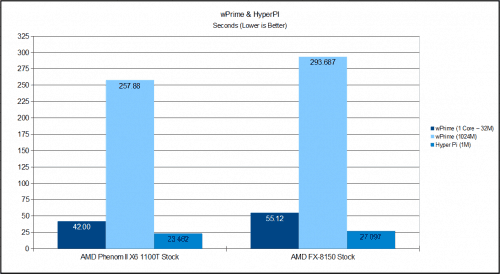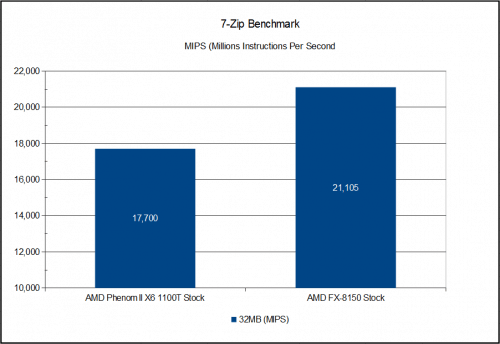PCMark07 – Total System Performance
PCMark07 is the latest and greatest version of Futuremark’s total system evaluation tool. It runs a battery of smaller tests (21 to be exact) in 3 cycles. These tests mimic daily use tasks like watching videos, live encoding, word processing, web browsing, etc. This should be a good test to see what you can expect from the FX-8150 on a daily basis.
When directly compared to the Phenom II 1100T, the FX-8150 holds a decent advantage in everything especially Computational work. The FX does fall behind in Entertainment which would consist of encoding and HD playback plus post processing. I personally want a more commanding lead here, but I am glad to see improvement.
Cinebench 11.5 – CPU & OpenGL Performance
This is a straight forward test of the CPUs rendering and computational power. I will be testing single threaded, multi-thread, and OpenGL workloads. The OpenGL test mainly focuses on the GPU. Since I am using the same GPU and the chipsets are virtually identical, any changes will be a reflection of the CPU. Also note that these test were done with the AMD 11.9 WHQL drivers as Cinebench would crash the 11.10 preview drivers.
The FX-8150 does perform better in the OpenGL test which should mostly be a result of the improved memory controller. There is also a 4.69% gain in the multi-threaded test; on the other hand, there is a 13.51% loss in the single thread test. It would seem that the FX-8150 is not very efficient in single core workloads. We will re-examine this in Part Two to see what happens if I prevent the thread from changing cores or modules during operation.
Sandra 2011 SP5 – CPU Specific Testing
The Sandra 2011 benchmark suite is a collection of great tools for testing various specifics of your system. While there is a lot I could test here, we are going to focus on CPU centric tests that simulate tasks that will be done during normal use.
When it comes to Processor Arithmetic and Multimedia processing, the 1100T just doesn’t stand a chance. The gains here are 10.9% to 201.3% in these test. As this does not match up with the PCMark07 Entertainment tests, I can only assume Sandra 2011 is using more optimized data paths. This means it is using the newer instruction sets which are often time saving instructions that perform more than one operation per clock cycle. I am sure PCMark07 will update their tools to better take advantage of Zambezi chips in a future revision.
In the Cryptgraphy test, which focuses on encryption and decryption, we get very interesting results. The SHA-256 test shows falling well behind the 1100T to the tune of a 48.3% lose. Then the FX-8150 pulls the AES instruction set support and walks all over the 1100T. For AES-256 test, the FX-8150 has an absolutely unfair 588.34% advantage.
In my final test for Sandra 2011, I just wanted to get an idea of the best memory bandwidth each CPU was capable. While the FX-8150 is using its recommend spec for RAM, I used settings for the 1100T I tested for best performance which for me is 1600 MHz @ 9-10-9-27 CR1. The Phenom II X6 1100T on its best day is over 6 GB/s behind the Bulldozer memory controller’s bandwidth. Even when considering the FX-8150 average of 18.2 GB/s instead of the best throughput being displayed, there simply is no comparison here. This is a 33% improvement.
wPrime & HyperPI– Single Threaded and Multi-threaded Pi Calculation
This time we are going to use two popular programs that enthusiasts use to test the stability of their systems. These programs are based on old code and are not well optimized. This should give us an idea of how the FX-8150 responds to older programs.
In these test the 1100T wins by a landslide. Tackling these older programs comes down to raw clock for clock power and the FX-8150 just can’t keep up. I am sure what the exact cause for this is, but I believe it is more to do with the software than the shared resources in Bulldozer modules being a bottleneck. In this test I simply cannot be sure. Regardless of what the cause, it currently means the FX-8150 falls below the 1100T here.
7-Zip Benchmark – Operations Per Second
For the 7-Zip benchmark we are going to do some real world computational work. As we have seen in Sandra and PCMark07, the FX-8150 should do well in test involving this kind of workload from software that is kept up-to-date.
As expected the FX-8150 holds a commanding lead here. The Zambezi chips seem to do much better in real world programs that are either new or kept up to date. It seems only when the software being used is fairly dated do we get relative under performance. This is a double edge sword as there are a few very popular programs that don’t get updates very often such as Handbrake.

